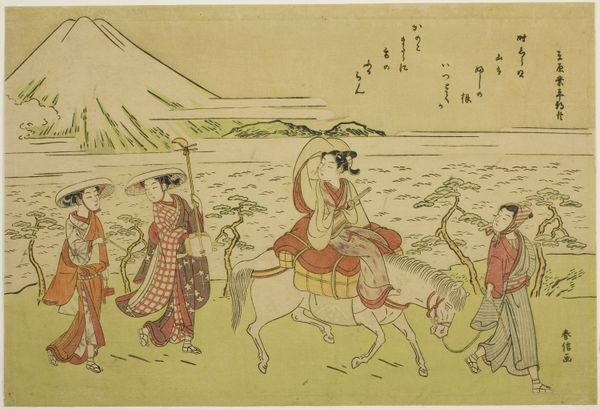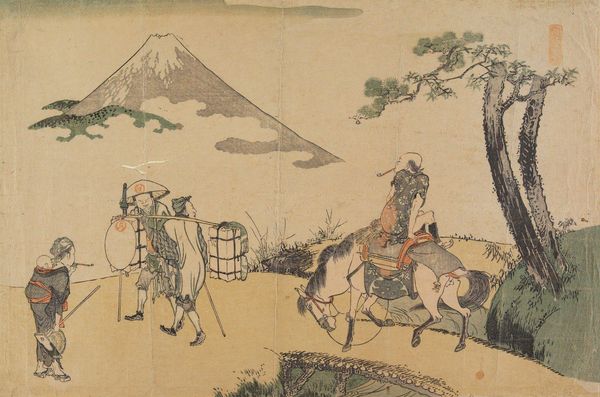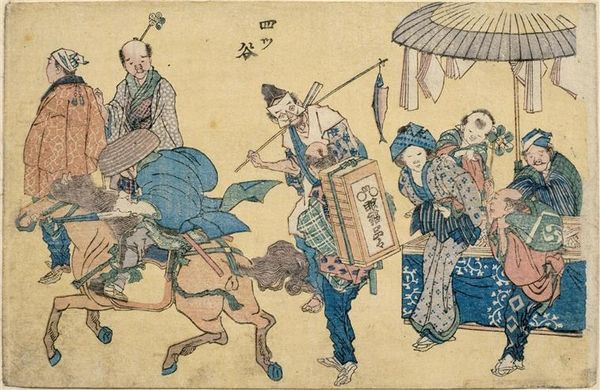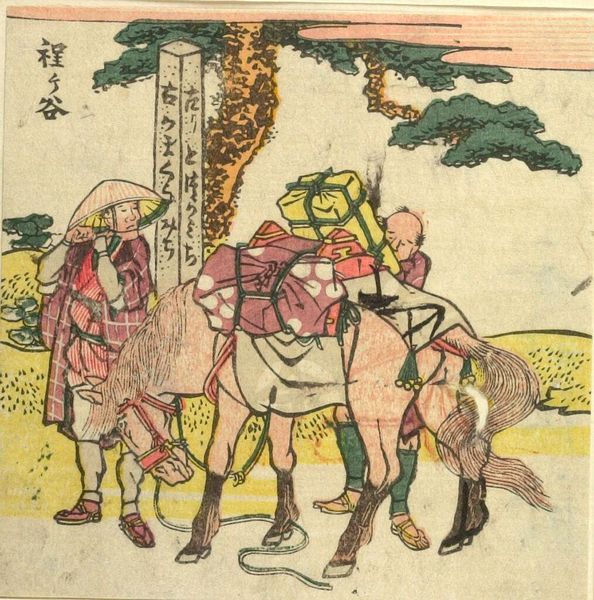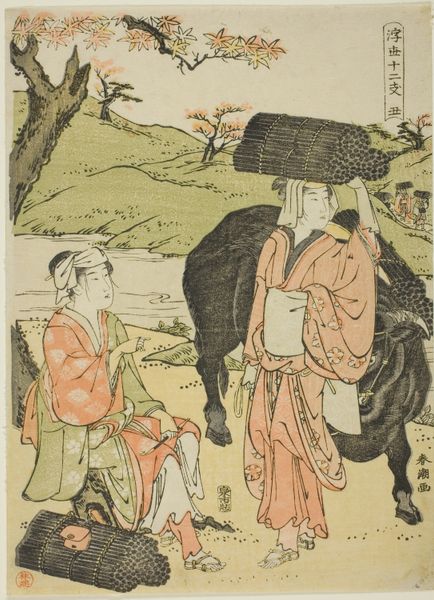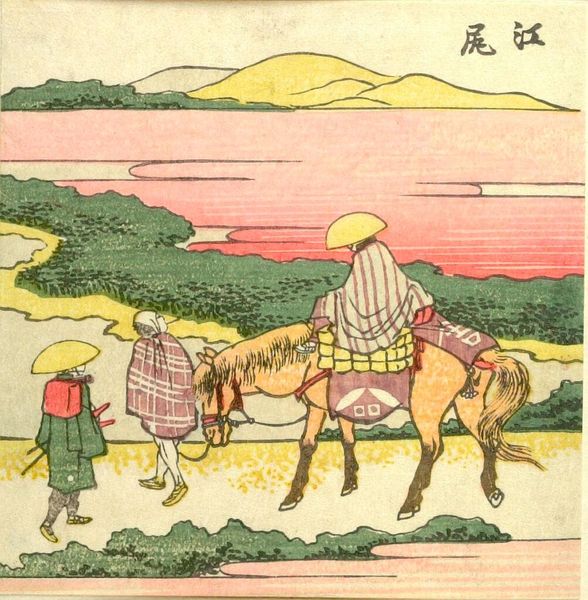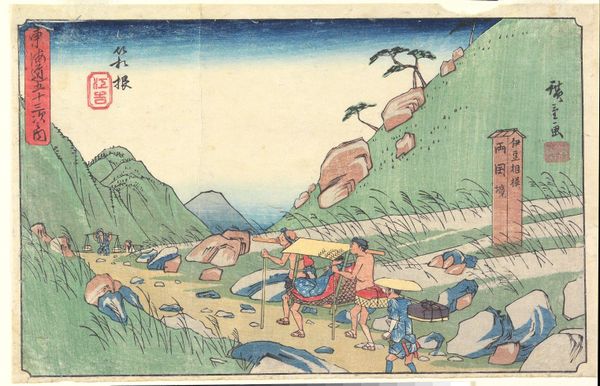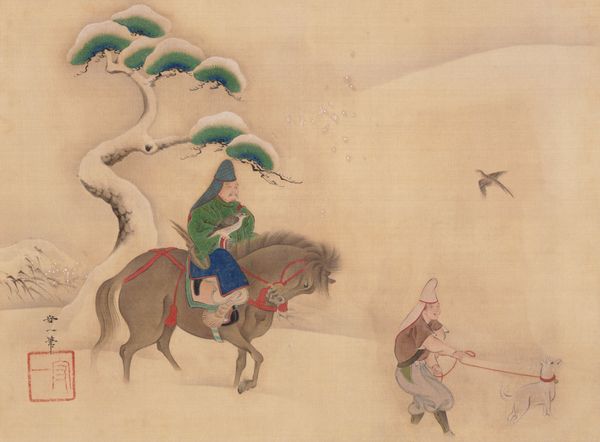
print, woodblock-print
# print
#
asian-art
#
landscape
#
ukiyo-e
#
figuration
#
coloured pencil
#
woodblock-print
#
line
Copyright: Public domain
Curator: What strikes me immediately about this work is the delicacy of line and the understated color palette, which creates a serene and contemplative mood. Editor: I see something very different. Look closely—we're presented with a depiction of labor, two figures undertaking physical travel. This connects to the broader circulation of goods and people during the Edo period when woodblock prints like this one gained popularity. Curator: Interesting point! Formally, though, consider how Utamaro uses the stark silhouette of Mount Fuji as a compositional anchor. It stabilizes the image, yet the eye is then led back into the foreground by the figures' movement. The layering creates depth using very little tonal variation. Editor: But look at who is represented—we have someone riding what seems like an animal pulling goods along with a second figure doing the direct labor. This points to social stratifications in a changing, mobile early capitalist economy as much as aesthetics, right? Curator: Yes, though let's not neglect Utamaro's mastery of the woodblock technique itself. The textures he achieves with minimal carving create visual interest even without overt painterly effects. His lines are so precise that the landscape details suggest vastness while the forms of people feel real. Editor: True, and the mode of production of ukiyo-e prints matters, right? They're commodities traded, consumed, disseminated broadly and affordably; not solely objects of "high" art for wealthy elites to enjoy. These are stories made accessible to the burgeoning middle classes of Edo society through their labor and resources invested. Curator: I concede there’s definitely value in thinking about what this reflects about accessibility to imagery at that moment in time, its mass production as commodity for consumption, especially in contrast with court portraiture of prior ages. But now as the "Travels Looking at Mt. Fuji” print is housed at the Brooklyn Museum, it exists and communicates visually across time due to its clear, timeless structure. Editor: Ultimately, viewing this ukiyo-e, we can examine how even seemingly simple images of travel and labor are intertwined with broader systems of production, class, and cultural exchange in society. Curator: Indeed, Utamaro’s print provides a chance for both detailed, considered visual meditation but also to broaden discussions about social practice itself.
Comments
No comments
Be the first to comment and join the conversation on the ultimate creative platform.

